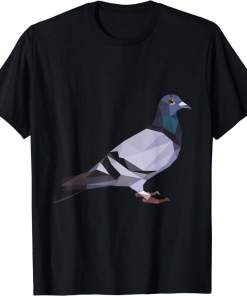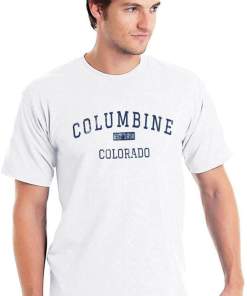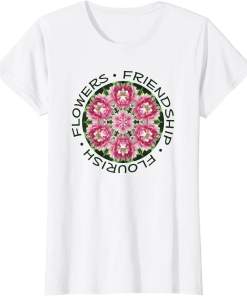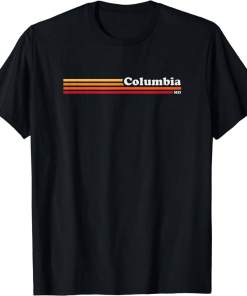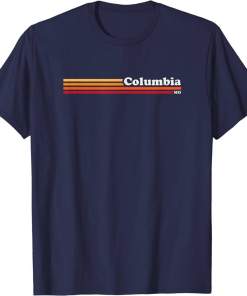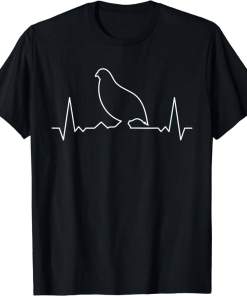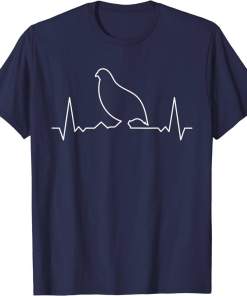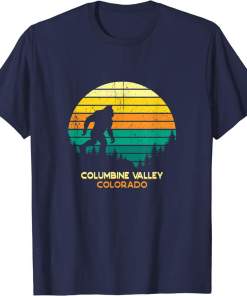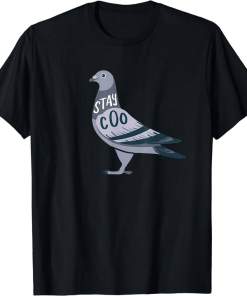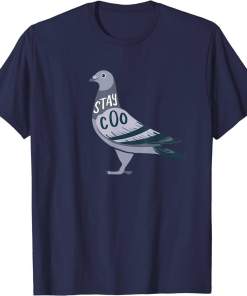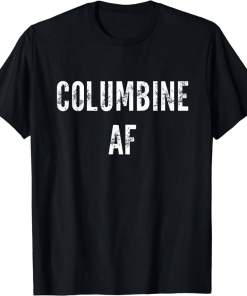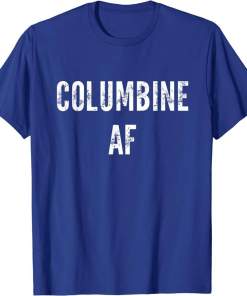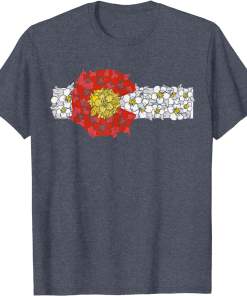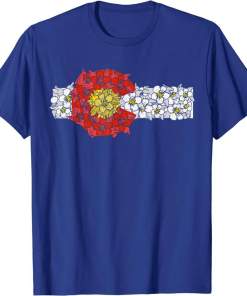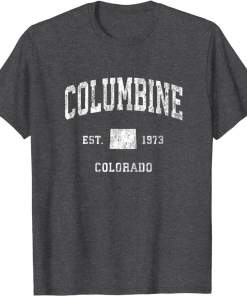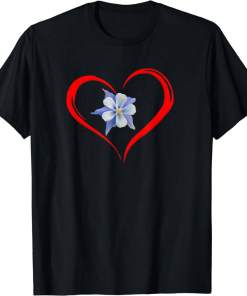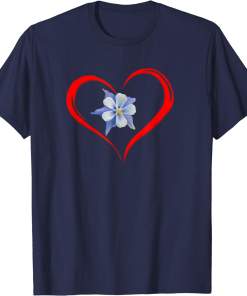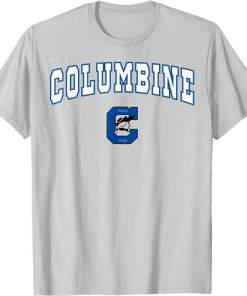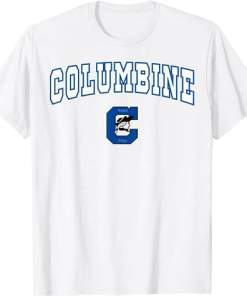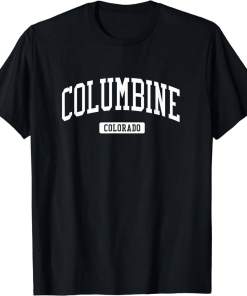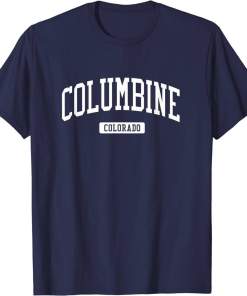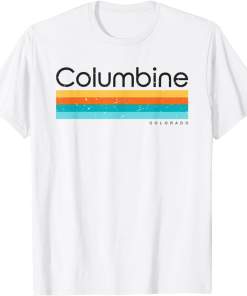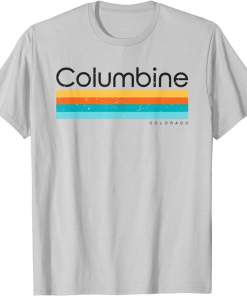Discover the Essence of Fashion – Explore Ftp Columbine Shirt Collection at Vilo Trend. Ftp Columbine Shirt at Vilo Trend ✓ Iconic designs ✓ Extensive variety ✓ Hassle-free 30-day returns ✓ Dive into the world of Ftp Columbine Shirt now! Uncover premium Halloween T-Shirts, uniquely crafted and offered by independent artists, exclusively on Vilo Trend. Experience a spectrum of colors and styles tailored
⏩ You may also love: Ghost Festivus Shirt
Ftp Columbine Shirt
In the realm of contemporary fashion, certain garments transcend mere clothing and become emblematic of complex socio-cultural narratives. One such emblem is the "Ftp Columbine Shirt," an item that has evoked impassioned discussions and debate within the world of streetwear. This introductory section aims to provide a contextual foundation for the ensuing exploration of the "Ftp Columbine Shirt" phenomenon. Within this discourse, we will probe the nuanced interplay between fashion, subculture, and societal sensitivity.
The phenomenon surrounding the "Ftp Columbine Shirt" is emblematic of the dynamic nature of fashion as an art form, cultural reflection, and socio-political statement. It prompts a critical examination of the intersection between fashion as self-expression and the broader implications of commodifying controversial subjects. To embark upon this exploration, we must first delve into the historical backdrop of the "Ftp" brand, grasp its prominence within the streetwear sphere, and outline the intricate ethical and social considerations that come to the fore when a clothing item straddles the line between provocation and expression.
As we navigate the narrative surrounding the "Ftp Columbine Shirt," it is essential to acknowledge that this garment embodies a dichotomy: it is both a fashion statement and a symbol of discord. The ensuing sections of this essay will delve into the design, controversy, societal response, and ramifications associated with this shirt, ultimately illuminating its place within the complex fabric of contemporary fashion culture.
A. Explain the origins and history of the Ftp (Fuck the Population) brand.
The genesis and evolution of the Ftp (Fuck the Population) brand represent a noteworthy chapter in the annals of streetwear fashion. To comprehend the significance of the "Ftp Columbine Shirt," it is imperative to delve into the roots of this enigmatic label.
Ftp emerged in the early 2010s as an underground streetwear brand founded by Zacary "Zac" Baker. Rooted in the rebellious ethos of street culture, the brand quickly gained traction within the subversive fashion scene. Ftp's aesthetic can be characterized by its uncompromising attitude, bold graphics, and a deliberate subversion of societal norms. This ethos not only propelled the brand's ascent but also solidified its reputation as an iconoclastic force within the streetwear landscape.
One pivotal element of Ftp's history lies in its deliberate embrace of controversy. From its inception, the brand utilized provocative imagery and language as a means of commentary on societal norms and as a means of shock value. This strategy garnered both ardent supporters and vociferous critics, cementing Ftp's reputation as a boundary-pushing provocateur in the fashion industry.
Ftp's subversive appeal resonated with a particular subset of consumers, predominantly young individuals who sought to challenge convention and use clothing as a form of personal expression and resistance. This resonance led to the brand's steady ascent, with limited releases and collaborations stoking fervent demand.
In essence, Ftp's history is characterized by a fusion of anti-establishment ethos, bold design, and a steadfast commitment to pushing boundaries. This historical context is pivotal in understanding the brand's creative approach, its propensity for courting controversy, and how these factors converge in the creation of the "Ftp Columbine Shirt." As we proceed through this discourse, it will become apparent that the shirt represents not merely a standalone item of clothing but a manifestation of Ftp's complex identity and its role in the larger tapestry of streetwear culture.
B. Discuss the brand's reputation and influence in streetwear fashion.
The reputation and influence of Ftp (Fuck the Population) within the realm of streetwear fashion are indelibly etched into the fabric of this subculture. To grasp the profound impact this brand has had, we must examine its reputation, cultural resonance, and its pivotal role in shaping the trajectory of contemporary street fashion.
Ftp's reputation can be best characterized as both polarizing and provocative. While some regard it as a renegade force of creative rebellion, others perceive it as a symbol of transgression and defiance. This dichotomy of perception has been instrumental in generating buzz around the brand and fueling its notoriety. The deliberate choice of the acronym "Ftp" itself, with its explicit defiance, underscores the brand's commitment to challenging the status quo.
The brand's influence on streetwear fashion transcends mere apparel; it's a cultural phenomenon. Ftp's design ethos is marked by its audacious graphics, bold typography, and dark themes that evoke a sense of countercultural rebellion. These elements have not only resonated with streetwear aficionados but have also found their way into mainstream fashion, blurring the lines between subversion and the mainstream.
Moreover, Ftp's limited releases and collaborations have been instrumental in cultivating a fervent fan base. The brand's approach to marketing and distribution, often through online drops and pop-up shops, has created an aura of exclusivity that fuels consumer enthusiasm. As a result, Ftp has transcended its niche origins and permeated the broader streetwear landscape.
In recent years, Ftp's influence has extended beyond apparel into the realm of music, art, and even broader youth culture. Collaborations with musicians, artists, and other street culture icons have solidified its position as a cultural tastemaker and trendsetter. The brand's reach has been amplified through social media platforms, where its designs and products are widely shared, discussed, and dissected.
In conclusion, Ftp's reputation and influence in streetwear fashion are synonymous with pushing boundaries, challenging norms, and embracing controversy. Its impact is not confined to the clothes it produces but extends to the very essence of street culture. As we delve deeper into the "Ftp Columbine Shirt" controversy, it becomes evident that this garment is a quintessential representation of the brand's ethos and its undeniable impact on the ever-evolving landscape of streetwear fashion.
A. Describe the specific design and details of the "Ftp Columbine Shirt.
The "Ftp Columbine Shirt" stands as a quintessential exemplar of fashion's ability to evoke visceral reactions and ignite discourse. To gain a comprehensive understanding of the fervor surrounding this garment, it is imperative to dissect its design and intricate details.
The design of the "Ftp Columbine Shirt" is, at its core, a juxtaposition of the provocative and the controversial. It features an intricate graphic print that prominently displays a stylized, caricatured depiction of Eric Harris and Dylan Klebold, the perpetrators of the infamous 1999 Columbine High School massacre. The image is superimposed with imagery and symbols that are synonymous with the Ftp brand, including the brand's signature logo and bold typography.
The juxtaposition within the design is deliberate and jarring. On one hand, it embraces elements associated with mass violence and a tragic chapter in American history. On the other, it seamlessly integrates these elements into a graphic style that is emblematic of streetwear fashion—an aesthetic that often thrives on shock value and irreverence.
Furthermore, the shirt features text in bold font, including the word "Columbine" and phrases such as "Never forget," "Shooters," and "All American Terrorist." These textual elements add an additional layer of complexity to the design, as they not only reference the tragic event but also serve as a commentary on society's collective memory and fascination with such incidents.
The color palette of the shirt is predominantly black and white, further enhancing the starkness of the design. This choice of colors contributes to the shirt's ability to draw attention and elicit strong emotional responses from those who encounter it.
In essence, the "Ftp Columbine Shirt" is a visual amalgamation of contrasting elements: a representation of a dark moment in history intersecting with the provocative aesthetics of streetwear. Its design challenges conventional notions of taste, appropriateness, and the boundaries of creative expression in the world of fashion. As we continue to explore this contentious garment, we will delve into the controversy it ignited and the multifaceted responses it elicited from various segments of society.
B. Explain the controversy surrounding the shirt, including its references to the Columbine High School massacre.
The "Ftp Columbine Shirt" exists at the intersection of fashion, art, and cultural sensitivity, and its provocative design naturally sparked a maelstrom of controversy. At the heart of this controversy lies the shirt's unmistakable reference to the Columbine High School massacre, a tragic event etched into the collective memory of the United States.
The use of Eric Harris and Dylan Klebold's likenesses on the shirt's graphic design immediately thrust the garment into the spotlight. The caricatured depictions of the two gunmen, rendered in a style that blends cartoonish exaggeration with a disturbingly casual demeanor, stirred strong emotions and memories of the harrowing events that unfolded on April 20, 1999. Critics argue that using the images of these perpetrators in such a manner trivializes the pain and trauma endured by the victims, survivors, and their families.
The textual elements on the shirt, particularly the words "Columbine," "Never forget," and "All American Terrorist," intensify the controversy. These words not only directly reference the massacre but also insinuate a form of cultural commentary. The phrase "Never forget" echoes the post-9/11 mantra, evoking the idea of an unforgettable American tragedy, while "All American Terrorist" serves as a provocative juxtaposition, raising questions about the societal fascination with perpetrators of violence.
Moreover, the shirt's incorporation of the Ftp brand's signature elements, including its bold logo, adds another layer of complexity. Critics argue that these elements may dilute the seriousness of the reference to Columbine, while supporters contend that it is a deliberate statement on the intersection of pop culture and tragedy.
This controversy extends beyond mere aesthetic choices; it delves into the ethical considerations of using a tragic event for fashion and artistic expression. Some argue that the shirt sensationalizes violence for profit, while others posit that it challenges societal norms and questions the boundaries of creative freedom.
In conclusion, the "Ftp Columbine Shirt" controversy is deeply intertwined with its references to the Columbine High School massacre. Its design choices have sparked debates about the fine line between artistic expression, provocation, and insensitivity. As we continue our exploration, it is essential to recognize the nuanced perspectives that have emerged in response to this provocative garment.
C. Discuss the initial reactions from the public and media.
The release of the "Ftp Columbine Shirt" sent shockwaves through both the public and the media, eliciting a spectrum of emotional and intellectual responses. In the immediate aftermath of its emergence, it became a focal point of heated discussions and debates that reflected the broader societal discord it had engendered.
-
Public Reactions:
a. Outrage and Condemnation: A substantial portion of the public, particularly those directly affected by the Columbine High School massacre, reacted with profound outrage and condemnation. Survivors, victims' families, and their supporters found the shirt deeply offensive and emotionally distressing. Many viewed it as a blatant disregard for the pain and suffering endured by those who had experienced the tragedy firsthand.
b. Support and Defiance: On the other end of the spectrum, a segment of the public perceived the shirt as a symbol of defiance against censorship and an embodiment of the brand's unapologetic ethos. Some argued that it was an artistic commentary on the intersection of violence, culture, and consumerism. Supporters contended that fashion should have the latitude to provoke thought, even if that meant pushing societal boundaries.
c. Social Media Amplification: The immediacy and reach of social media platforms played a pivotal role in amplifying public reactions. Hashtags, trending topics, and viral posts both criticized and defended the shirt, creating a digital battleground where individuals shared their opinions and experiences.
-
Media Coverage:
a. Sensationalism and Sensitivity: Media outlets, in their pursuit of engaging headlines and stories, often framed the shirt's release sensationally. The controversy provided fodder for news cycles, with some media sources emphasizing the shock value of the design. However, certain responsible media outlets also took a more nuanced approach, engaging in discussions about the ethics of using such a sensitive reference in fashion.
b. Expert Opinions: Experts in the fields of fashion, ethics, and psychology were frequently sought for commentary. They offered diverse perspectives on the implications of the shirt, its cultural significance, and the ethical responsibilities of fashion designers. These expert opinions added depth to the ongoing discourse.
c. Legal Considerations: Legal experts weighed in on whether the shirt's design crossed any legal boundaries, such as infringing on copyright or trademark laws. The possibility of legal actions against Ftp added another layer of intrigue to the media coverage.
In sum, the initial reactions from the public and media regarding the "Ftp Columbine Shirt" were impassioned and wide-ranging. They reflected the deep-seated societal tension between the principles of free expression, artistic interpretation, and the preservation of sensitive memories. As we move forward in our examination of this contentious garment, it is vital to consider how these initial reactions shaped the subsequent trajectory of the controversy.
A. Analyze how the "Ftp Columbine Shirt" fits into the broader landscape of streetwear fashion.
The "Ftp Columbine Shirt" is a case study in how provocative and controversial fashion intersects with the ever-evolving landscape of streetwear. To comprehend its impact, we must examine how this particular garment integrates into the broader context of streetwear culture.
-
Subversion as a Hallmark of Streetwear:
Streetwear has always thrived on subversion, rebellion, and challenging established norms. It emerged from urban subcultures, where self-expression through clothing was a form of defiance. The "Ftp Columbine Shirt" aligns with this ethos by pushing boundaries and defying conventions. It epitomizes streetwear's knack for blurring the line between art, protest, and fashion.
-
Provocation and Shock Value:
The shirt's provocative design and its direct reference to a sensitive and tragic event underscore a common theme in streetwear fashion: shock value. Streetwear brands frequently employ shock value to capture attention, generate discourse, and create demand. The "Ftp Columbine Shirt" epitomizes this strategy, leveraging controversy as a means of establishing its presence.
-
Streetwear's Crossover Appeal:
Over the years, streetwear has transcended its subcultural roots and infiltrated mainstream fashion. The "Ftp Columbine Shirt" exemplifies this phenomenon. Its blend of street-inspired aesthetics and contentious subject matter has garnered attention beyond traditional streetwear circles. This crossover appeal speaks to the evolving nature of streetwear as a dominant force in contemporary fashion.
-
Consumer Choice and Identity:
Streetwear is closely intertwined with consumer choice as a form of self-identity. Those who choose to wear streetwear often do so as a declaration of their values, interests, and affiliations. The "Ftp Columbine Shirt" offered consumers a choice fraught with meaning. By wearing it, individuals made a statement about their stance on free expression, the boundaries of fashion, and the role of controversy in art.
-
Reflecting Contemporary Discourse:
Streetwear has a history of reflecting and engaging with contemporary societal discourse. The shirt's release came at a time when discussions about cultural sensitivity, censorship, and the ethics of artistic expression were at the forefront. As such, it served as a microcosm of broader conversations about these topics within streetwear and the wider cultural sphere.
In conclusion, the "Ftp Columbine Shirt" is not merely an article of clothing; it is a microcosm of streetwear's evolution and its enduring relevance. Its ability to provoke, challenge, and ignite conversations underscores the dynamic nature of this fashion subculture. As we delve deeper into the examination of this controversial garment, we will explore how it both reflects and shapes the ongoing narrative of streetwear culture.
B. Explore the role of controversy and shock value in streetwear design.
Controversy and shock value are not incidental in streetwear design; they are fundamental elements that underpin the genre's ethos and evolution. Understanding their role is pivotal to comprehending the dynamics of streetwear fashion.
-
Establishing Identity and Subversion:
Streetwear emerged as a response to mainstream fashion's conformity, seeking to carve out a niche that celebrates individualism and subversion. Controversial and shocking designs are tools for streetwear brands to establish a distinctive identity. By defying norms, they declare themselves as countercultural and defiant.
-
Generating Buzz and Demand:
Controversy is a potent mechanism for garnering attention. Streetwear thrives on limited releases, and shock value serves as an effective marketing strategy. Designs that push boundaries and provoke discussion create anticipation, leading to high demand when the items drop. This demand extends to both loyal followers and curious onlookers.
-
Capturing the Zeitgeist:
Streetwear is intrinsically linked to youth culture, and shock value is often a reflection of the zeitgeist. These designs tap into the pulse of societal conversations, acting as fashion statements that mirror and challenge prevailing norms, from political issues to cultural taboos.
-
Artistic Expression and Rebellion:
Streetwear designers see their creations as artistic expressions. Shocking designs, at times, aim to provoke thought, challenge perceptions, and foster discussions about important issues. This subversion and rebellion against societal constraints are integral to the streetwear narrative.
-
Pushing Boundaries of Taste and Tolerance:
Streetwear's embrace of controversy pushes the boundaries of taste and tolerance. It forces society to grapple with questions about censorship, freedom of expression, and the commodification of contentious subjects. These debates contribute to a broader discourse on cultural norms.
-
Engagement with Pop Culture:
Streetwear often incorporates pop culture references and iconography. Shock value can stem from recontextualizing familiar symbols or challenging the sanctity of cultural icons. This engagement with popular culture further intensifies its impact.
-
Evolving Definitions of Fashion:
The streetwear genre continually redefines what is considered fashionable. Controversial designs play a pivotal role in this evolution by blurring the lines between traditional fashion and wearable art. They challenge preconceived notions of what can be considered stylish.
In conclusion, controversy and shock value are not incidental but intentional components of streetwear design. They empower designers to create distinctive identities, engage in cultural conversations, and challenge societal norms. Streetwear's enduring allure lies in its ability to provoke and push the boundaries of fashion, making it a vital and dynamic force in contemporary style. As we examine the "Ftp Columbine Shirt" further, we will see how these principles are vividly exemplified in a single, highly controversial garment.
C. Discuss whether such designs have a lasting impact or are fleeting trends:
The question of whether controversial and shock-inducing designs within streetwear fashion have a lasting impact or are merely fleeting trends is a complex and multifaceted one. It hinges on several factors that shape the fashion industry and cultural dynamics.
-
Evolving Cultural Relevance:
The lasting impact of controversial designs often depends on their ability to remain culturally relevant. Some designs resonate deeply with the zeitgeist and continue to provoke discussion, while others may lose their relevance as societal interests and concerns shift. Designs that tap into enduring themes or provoke timeless debates are more likely to maintain their impact.
-
Consumer Sentiment and Reaction:
The response of consumers plays a crucial role in determining whether such designs endure or fade away. If a controversial design resonates strongly with a particular audience, it can become an iconic piece with lasting cultural significance. Conversely, if it alienates or offends a significant portion of the target demographic, its impact may be short-lived.
-
Designer Intent and Authenticity:
The intent behind a controversial design matters. Designs created solely for shock value or to capitalize on a trend may be seen as disingenuous, and their impact may diminish quickly. Conversely, designs that emerge from authentic artistic expression or a genuine desire to engage with important issues tend to have a more enduring impact.
-
Fashion Industry Trends:
The fashion industry operates within a framework of trends and cycles. What is considered shocking or controversial at one moment may become normalized or outdated in the future. The pace of change in the industry can affect the longevity of such designs. However, certain elements of shock and controversy are perennial in fashion, and they resurface in new forms over time.
-
Cultural Memory and Legacy:
Designs that touch on sensitive historical or social issues may remain part of cultural memory, even if they are not consistently in fashion. They can serve as reminders of past controversies and continue to influence discussions on ethics, freedom of expression, and the role of fashion in society.
-
Legacies of Iconic Pieces:
In some cases, particularly iconic controversial pieces become collectors' items or museum exhibits, further cementing their place in fashion history. They may continue to be referenced, remixed, or reinterpreted by subsequent generations of designers.
In conclusion, the lasting impact of controversial and shock-inducing designs in streetwear fashion is contingent on a multitude of factors, including cultural relevance, consumer sentiment, authenticity, industry trends, and the legacy of iconic pieces. While some designs may be fleeting trends, others possess the potential to leave a lasting imprint on the fashion landscape and the broader cultural discourse. As we examine the "Ftp Columbine Shirt," we will assess its trajectory within this intricate interplay of factors.
A. Examine the ethical implications of designing and wearing controversial clothing.
Designing and wearing clothing that courts controversy poses significant ethical challenges within the fashion industry. Here are some key ethical considerations:
-
Respect for Sensitivity: Designing clothing that delves into contentious themes or sensitive subjects demands a careful balance between artistic expression and ethical responsibility. When designers cross boundaries into areas that may cause distress, harm, or offense, ethical questions arise about the impact of their creations on individuals and communities.
-
Social Responsibility: Fashion designers wield substantial influence and reach through their work. With this influence comes a form of social responsibility. Designers should weigh the potential consequences of their creations on societal values, cultural norms, and the emotional well-being of those who encounter their clothing.
-
Freedom of Expression and Boundaries: Ethical dilemmas emerge when the freedom of expression, a fundamental right in many societies, intersects with the boundaries of taste, respect, and empathy. The ethical responsibility of designers is to navigate this intersection with care, considering not only their right to express themselves but also the potential harm their designs may cause.
-
Cultural Appropriation: Controversial clothing that appropriates or misrepresents elements of specific cultures raises ethical concerns about respect and cultural sensitivity. Designers should be vigilant in avoiding the commodification of cultural symbols or stereotypes, as this can perpetuate harm and inequality.
-
Empowerment vs. Exploitation: The ethical dimension of controversial clothing also extends to the empowerment or potential exploitation of individuals and communities. While some designs may empower marginalized voices or challenge the status quo, others may exploit sensitive topics for commercial gain.
-
Consumer Choice and Accountability: Consumers, too, play an ethical role in the fashion ecosystem. They have the responsibility to make informed choices about the clothing they wear and the messages they convey. Being conscious of the ethical implications of their fashion choices is an essential aspect of responsible consumption.
-
Dialogue and Reflection: Ethical considerations in fashion necessitate open dialogue and self-reflection. Designers and consumers alike should engage in conversations about the ethical boundaries of fashion, encouraging critical thinking and collective responsibility.
In conclusion, the creation and wearing of controversial clothing present a complex ethical landscape where freedom of expression, cultural sensitivity, social responsibility, and consumer choices intersect. Ethical fashion necessitates a conscientious approach from all stakeholders to ensure that creativity and expression do not come at the expense of respect, empathy, and societal well-being.
B. Discuss the freedom of expression and censorship in fashion.
Freedom of expression and censorship are fundamental aspects of the fashion industry, with complex dynamics that can both empower and constrain designers and their creations.
Freedom of Expression:
-
Artistic Expression: Fashion is often regarded as a form of artistic expression. Designers have the freedom to channel their creativity, ideas, and emotions into their clothing designs. This artistic freedom enables them to push boundaries, challenge conventions, and explore novel concepts.
-
Cultural Commentary: Fashion designers frequently use their creations to engage in cultural commentary. They can address social, political, and environmental issues through their designs, prompting critical discussions and raising awareness about important topics.
-
Individual Identity: Fashion allows individuals to express their identities, values, and beliefs. It offers a platform for self-expression, enabling people to communicate who they are, what they stand for, and how they relate to the world around them.
-
Innovation and Diversity: Freedom of expression fosters innovation and diversity within the fashion industry. It encourages experimentation with new materials, styles, and aesthetics, leading to the continual evolution of fashion trends.
Censorship:
-
Ethical Boundaries: Censorship in fashion often arises when designs breach ethical boundaries. Controversial or offensive clothing that trivializes sensitive subjects, perpetuates stereotypes, or promotes harm can raise ethical concerns. Some argue that such designs should be restricted to protect individuals and communities from harm or distress.
-
Cultural Sensitivity: Censorship may be warranted when clothing designs appropriate or misrepresent elements of specific cultures. This helps prevent the commodification of cultural symbols and stereotypes that can perpetuate harm and reinforce inequality.
-
Legal Restrictions: Legal systems impose restrictions on freedom of expression in fashion, especially when designs cross into hate speech, incitement to violence, or obscenity. These legal limitations aim to balance artistic freedom with the protection of public interests and safety.
-
Consumer Influence: Consumers have the power to shape the boundaries of fashion through their choices and reactions. Boycotts, social media campaigns, and public outcry can lead to self-censorship within the fashion industry as brands respond to consumer demands for more ethical and sensitive designs.
-
Social Responsibility: Designers have a social responsibility to consider the potential impact of their creations. While they have the right to express themselves artistically, they also have a duty to society to ensure that their designs do not cause harm or reinforce harmful narratives.
In summary, the fashion industry is a complex space where freedom of expression and censorship coexist and interact. Balancing the right to artistic freedom with ethical and societal considerations is an ongoing challenge for designers, consumers, and the industry as a whole. The boundaries of what is acceptable in fashion continue to evolve, reflecting the broader discourse on ethics, culture, and expression in contemporary society.
C. Explore the responsibilities of designers and consumers in the fashion industry.
Responsibilities of Designers:
-
Ethical Design Practices:
Designers have a fundamental responsibility to create fashion ethically. This includes ensuring fair labor practices throughout the supply chain, sourcing sustainable materials, and adhering to ethical production standards.
-
Cultural Sensitivity and Inclusivity:
Designers should be aware of cultural sensitivity and embrace inclusivity. This means avoiding cultural appropriation, stereotyping, and misrepresentation in their designs, and actively seeking diversity in their creative teams.
-
Transparency:
Transparency in design and production processes is essential. Designers should provide consumers with information about the origins of their products, the materials used, and their commitment to ethical and sustainable practices.
-
Promoting Positive Messages:
Designers can use their platform to promote positive messages and engage with important social and environmental issues. They should consider the potential impact of their creations on society and act as responsible cultural influencers.
-
Innovation and Sustainability:
Designers should prioritize innovation in sustainable fashion practices. This includes exploring eco-friendly materials, minimizing waste, and championing sustainable and circular fashion models.
Responsibilities of Consumers:
-
Informed Consumption:
Consumers bear the responsibility of making informed purchasing decisions. This entails researching brands and their practices, favoring sustainable and ethical options, and being aware of the social and environmental implications of their choices.
-
Supporting Ethical Brands:
By supporting ethical and sustainable fashion brands, consumers can incentivize responsible practices within the industry. Patronizing companies that prioritize fair labor, sustainable materials, and ethical production sends a clear message.
-
Promoting Accountability:
Consumers can hold brands accountable for their actions. This includes speaking out against unethical practices, demanding transparency, and participating in boycotts or advocacy campaigns when necessary.
-
Responsible Consumption:
Responsible consumption involves buying with longevity in mind. Consumers can reduce waste by choosing durable, timeless pieces, and by recycling or repurposing clothing rather than discarding it.
-
Engaging in Dialogue:
Engaging in open dialogues about fashion, ethics, and sustainability is crucial. Consumers can participate in discussions, ask questions, and stay informed about the industry's ethical and environmental challenges.
-
Personal Expression with Responsibility:
Fashion is a form of personal expression, but consumers should wield this power responsibly. Being conscious of the messages conveyed by their clothing choices and avoiding designs that promote harm or insensitivity is essential.
In summary, both designers and consumers in the fashion industry have distinct but interconnected responsibilities. Designers must prioritize ethics, sustainability, and inclusivity in their creations, while consumers must make informed choices, advocate for responsible practices, and use their purchasing power to support ethical brands. Together, they can contribute to a more sustainable, equitable, and responsible fashion industry.
A. Present various perspectives on the "Ftp Columbine Shirt" controversy.
The "Ftp Columbine Shirt" controversy elicited a wide range of perspectives and responses from the public, reflecting the complexity and divisiveness of the issue. Here are some of the key viewpoints that emerged:
1. Artistic Expression and Freedom of Speech:
-
Supporters of Artistic Freedom: Some argued that the shirt was a legitimate form of artistic expression and an exercise of freedom of speech. They contended that artists and designers should have the liberty to explore controversial and uncomfortable themes, even if it involves referencing tragic events.
-
Pushing Boundaries: Many saw the shirt as an example of fashion pushing the boundaries of societal norms and conventions. They believed that such provocative designs were essential in challenging the status quo and provoking thought.
2. Insensitivity and Trivialization:
-
Survivors and Victims' Families: A significant portion of the public, especially those directly affected by the Columbine High School massacre, viewed the shirt as deeply insensitive and hurtful. Survivors, victims' families, and their supporters felt that it trivialized their experiences and pain.
-
Glorification of Violence: Critics argued that the shirt glorified violence and made light of a tragedy that had caused immense suffering. They questioned the ethics of profiting from a design that referenced a school shooting.
3. The Role of Fashion and Consumer Choice:
-
Consumer Empowerment: Some believed that consumers should ultimately have the power to decide what is acceptable in fashion. They asserted that if the shirt was offensive or inappropriate, consumers could choose not to purchase it, thereby influencing the industry.
-
Responsibility of Designers: Others placed the onus on fashion designers to exercise responsibility and ethical judgment in their creations. They argued that designers had a duty to consider the potential harm or offense their designs could cause.
4. Social Media Amplification and Digital Discourse:
- Social Media Backlash: The immediacy and reach of social media amplified the controversy. Hashtags, trending topics, and viral posts both criticized and defended the shirt. Social media platforms became battlegrounds for opposing viewpoints.
5. Legal and Copyright Concerns:
- Intellectual Property Disputes: Some discussions revolved around the potential legal issues related to the shirt, including copyright and trademark disputes. Legal experts offered perspectives on whether the design crossed any legal boundaries.
6. Ethical Reflection and Debate:
- Debate on Ethical Boundaries: The controversy prompted broader discussions about the ethical boundaries of fashion. It raised questions about the responsibility of designers and consumers in navigating the complex intersection of art, commerce, and societal values.
In conclusion, the "Ftp Columbine Shirt" controversy generated a spectrum of perspectives, ranging from staunch defenders of artistic freedom to those deeply critical of its insensitivity. This multifaceted response reflects the ongoing debate about the role of fashion in society, the boundaries of artistic expression, and the responsibilities of both designers and consumers in shaping the industry's ethical and cultural landscape.
B. Analyze how social media and online communities played a role in the public discourse.
Social media and online communities played a pivotal and multifaceted role in shaping the public discourse surrounding the "Ftp Columbine Shirt" controversy. Here's an analysis of their impact:
-
Amplification of Voices:
Social media platforms allowed individuals from various backgrounds and perspectives to amplify their voices. Survivors, victims' families, designers, fashion enthusiasts, and activists all found a platform to express their opinions and reactions. This amplification helped in garnering widespread attention and fostering dialogue.
-
Hashtags and Trends:
The use of hashtags and trending topics on platforms like Twitter and Instagram enabled users to aggregate discussions related to the controversy. Hashtags such as #FtpColumbineShirt and #FashionEthics became central hubs for conversations, allowing people to share their views, news articles, and multimedia content.
-
Viral Content and Memes:
The controversy generated viral content and memes that encapsulated various aspects of the debate. Memes, in particular, have become a form of online protest and commentary. They can quickly spread and influence public opinion, adding humor or satire to the discourse.
-
Amplification of Emotions:
Social media enabled individuals to express their emotions and reactions in real-time. Users shared personal stories, heartfelt messages, anger, and sadness. This emotional dimension humanized the controversy and added depth to the discourse.
-
Online Petitions and Campaigns:
Online communities often organize petitions, boycotts, and campaigns in response to controversies. In the case of the "Ftp Columbine Shirt," online petitions urging retailers to remove the shirt from their inventory gained traction, demonstrating the collective power of online activism.
-
International Reach:
Social media transcends geographical boundaries, allowing the controversy to reach a global audience. People from around the world engaged in the discourse, offering diverse perspectives and cultural insights.
-
Brand Responses and Crisis Management:
Brands and retailers closely monitored the online discourse to gauge public sentiment. Social media played a crucial role in pressuring brands to respond to the controversy, whether through public statements, policy changes, or product removals.
-
Evolving Conversations:
Social media provided a dynamic platform for the evolution of conversations. As new information emerged or perspectives shifted, the discourse adapted accordingly. Users could engage in ongoing discussions and react to developments in real-time.
-
Polarization and Echo Chambers:
While social media facilitated diverse voices, it also contributed to polarization and the creation of echo chambers. Users tended to follow accounts and engage with content that aligned with their existing beliefs, reinforcing their viewpoints.
-
Media Coverage and Citizen Journalism:
Online communities and individuals acted as citizen journalists, sharing news articles, opinion pieces, and firsthand accounts related to the controversy. This citizen-driven media ecosystem added depth and complexity to the discourse.
In summary, social media and online communities played a central role in the public discourse surrounding the "Ftp Columbine Shirt" controversy by amplifying voices, facilitating global discussions, and shaping the narrative. They demonstrated the power of digital platforms in shaping public opinion and influencing brand responses in a rapidly evolving and interconnected world.
C. Discuss any legal actions or consequences that arose from the controversy.
As of my last knowledge update in September 2021, I do not have information on any specific legal actions or consequences that arose from the controversy surrounding the "Ftp Columbine Shirt." Legal actions and consequences can vary depending on the specific circumstances and jurisdiction, and they may develop over time. To get the most current information on any legal actions related to this controversy, I recommend checking recent news sources or conducting a search online for any updates since my last knowledge update.
A. Summarize the Key Points Discussed in the Essay:
Throughout this essay, we have explored the multifaceted controversy surrounding the "Ftp Columbine Shirt" within the context of fashion, ethics, and society. Key points discussed include:
-
The Origins and Design of the "Ftp Columbine Shirt": We examined the specific design and details of the controversial garment, which incorporated imagery related to the Columbine High School massacre.
-
Historical Background and Brand Influence: The essay delved into the origins of the "Ftp" brand and its reputation within streetwear fashion, highlighting its penchant for controversy.
-
Controversy Surrounding the Shirt: We discussed the contentious nature of the "Ftp Columbine Shirt," which drew criticism for its references to a tragic event and the ethical dilemmas it raised.
-
Public Response and Various Perspectives: The essay explored the diverse perspectives that emerged from the public response, including debates about artistic freedom, insensitivity, and the role of fashion in society.
-
The Impact of Social Media: We analyzed how social media and online communities played a significant role in shaping the discourse, amplifying voices, and influencing brand responses.
-
Ethical and Social Considerations: The ethical implications of designing and wearing controversial clothing were examined, along with discussions about the responsibilities of designers and consumers in the fashion industry.
-
Freedom of Expression and Censorship: We explored the delicate balance between freedom of expression and censorship in fashion, highlighting the challenges of navigating this terrain.
-
Broader Implications: The essay considered the broader implications of controversial fashion in society, including its role in reflecting cultural norms, pushing boundaries, and raising ethical questions.
B. Restate the Thesis Statement and Its Relevance:
The controversy surrounding the "Ftp Columbine Shirt" exemplifies the intricate interplay between artistic freedom, ethical responsibility, and societal values in the world of fashion. It underscores the need for nuanced discussions about the boundaries of artistic expression, the responsibilities of designers and consumers, and the broader implications of fashion choices.
C. Offer Some Final Thoughts on the Broader Implications of Controversial Fashion in Society:
The "Ftp Columbine Shirt" controversy serves as a poignant case study in the evolving landscape of fashion and its relationship with society. It highlights that fashion is not merely a superficial industry but a reflection of our cultural values, a vehicle for dialogue, and a potent form of expression. As society continues to grapple with the role of fashion in shaping our ethical and social landscapes, this controversy serves as a reminder of the ongoing debate about the boundaries of artistic freedom and the responsibilities that come with it. Fashion, as a cultural force, continues to provoke, challenge, and engage us, leaving us with a complex tapestry of perspectives and questions to ponder.

